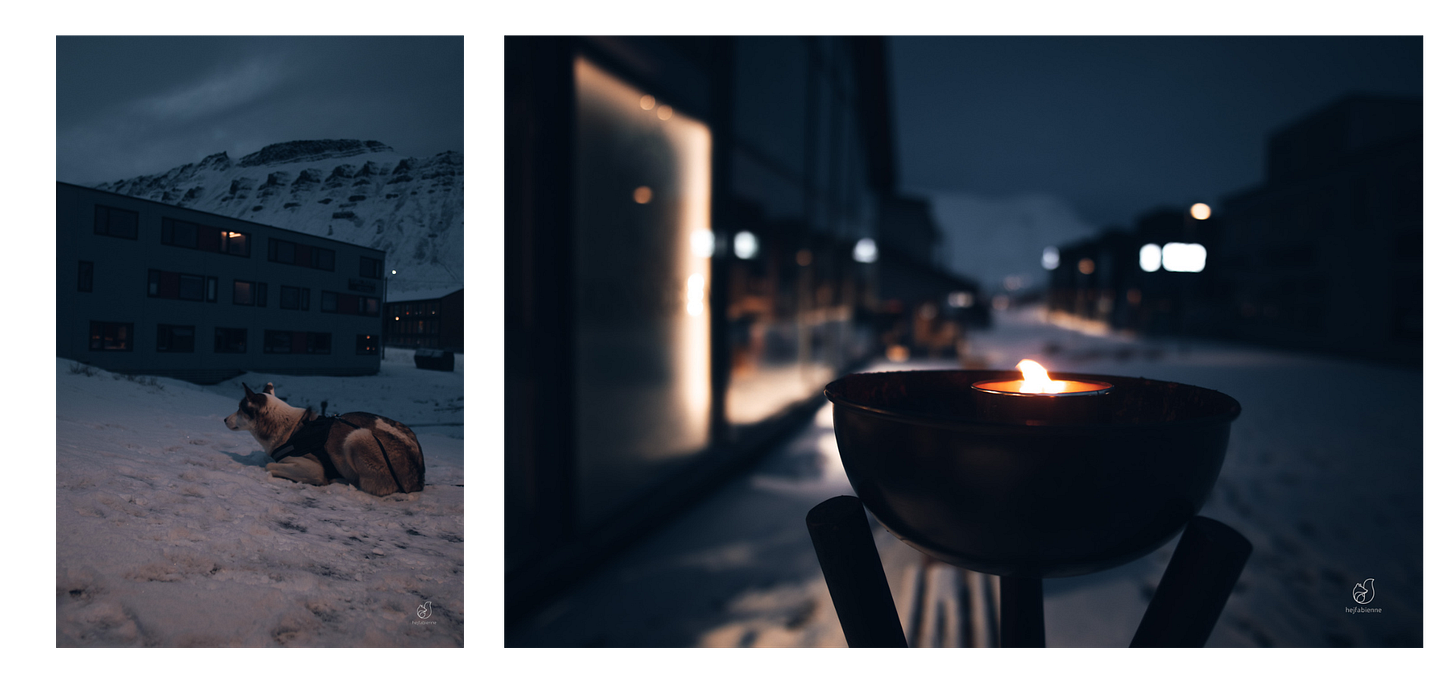Hej, hej
And suddenly … it’s November. Fall is my favourite season, and except for some of the tundra grass that turned a bit more orange than in already was…there was no real fall here. The seasons on Svalbard are mainly distinguished by daylight – and light conditions in general. Right now, we live in a twilight zone.
It is not yet pitch black the entire day, but we still have a few hours of dusk – decreasing with each day. This week, I was struggling with severe fatigue. Past noon, when it started to get dark again, I felt terribly tired, struggled through the afternoon, just to be wide awake during my usual bedtime … and then not able to get up in the morning. I think it got a bit better again now, and I went for a looooong walk today.
Let’s have a look at the last week:
Monday: We went on an excursion to SuperDARN (Super Dual Aurora Radar Network). It is a scientific radar station which looks into the upper atmosphere and provides information on the Earth’s space environment.
It is located next to EISCAT, another radar station that we visited. I am glad that we did not go there to actually UNDERSTAND what these radars are used for (I promise, I tried to understand!), but to learn about the technical challenges related to such sensitive instruments in the Arctic.
We also did an experiment that taught us about “supercold” water droplets – water which is below its freezing point but still “does not want to freeze” – until it suddenly freezes and, depending on air temperature and wind, can create glaze or rime ice that covers cold surfaces like a shield.
Tuesday: On Tuesday, we went to KSAT / Svalsat – a satellite ground station here on Svalbard, which is the biggest in the world.
Due to the high latitude here, satellites pass by more frequently then in other regions which makes Svalbard a prime spot for satellite data and communication. But also a challenging one related to the harsh weather conditions and remoteness. Satellite data is important for weather forecast (yes, your local weather forecast is most likely coming from here), climate and forest data, maritime surveillance, Navigation and communication.
Wednesday - Friday: We had lectures and started working on our group projects for this course. On Friday evening, we had a cosy movie night in one of the shared kitchens 😊
Saturday: Went for a long walk and edited a video for the university.
Sunday: As much as I don’t like writing this… I might have to spend some more brain cells on a potential master thesis topic – this is so frustrating right now.
So, I thought I use this newsletter to share with you some Longyearbyen “downtown” pictures that I took while we still have some daylight 😊
Walking in and around town is possible without polar bear protection, and it’s really nice to visit “the beach” or the view from the water storage.
There are quite a few shops in town such as the one and only Coop supermarket (Svalbard butikken), the alcohol store “Nordpolet” and some Outdoor stores.
When we came back from one of the excursions this week and saw the lights of Longyearbyen from further away, it kind of felt like “just a normal city” anywhere in the world. But we all know, it is not. And on Wednesday evening, suddenly all the lights went out. Yes, power outage. It is quite common since the power plant is “well advanced in years”. It was around 17:00 – I was in my room and doing a Pamela Reif workout (don’t ask, I died 10 times at least), when suddenly, I was “jumping in the dark”. There were also no lights outside my window anymore except for some cars, emergency lights and the hospital. I immediately felt lucky to be at the student housing and not e.g. somewhere on a hike or at the sports hall. I found my headlamp and decided that it might be wise to take a shower in the very romantic light of the headlamp. Power stayed off and I joined the others in the kitchen where we just decided – to have some drinks. It was super cosy.
One of the PhD students in my kitchen, Jildou, got worried about her research samples since the incubators were not connected to the emergency power. Though the power made a couple of attempts to come back during the next two hours, it went off after a few minutes. So I decided to join her on a mission to save her copepods at the university. First, she tried to organise an emergency generator, but if this would not work out, we collected ice from different areas inside the university and helped the poor little guys to cool down again.
And there I was – saving 1.000 lives in one night :D The light already came back while we were still at UNIS – and it stayed on since then.
Stay warm and cosy!
/ Fabi ❆⇞















